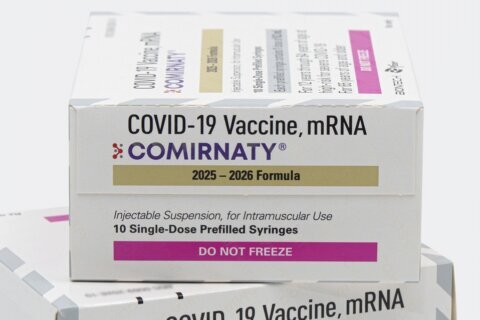As communities across the country prepare for a return to school, many are still deciding how much time and how many resources to devote to routine Covid-19 testing of students and staff — and what that might look like.
“Lots of places have operationalized screening testing differently,” Dr. Westyn Branch-Elliman, an infectious diseases specialist and assistant professor at Harvard Medical School, told CNN. “Obviously, the more frequently you test students and staff, the more expensive the testing program is. So, many programs will test a certain proportion of students and staff every week.
“It’s not uncommon to say, test 20% of people, once a week and then another 20% another week — but the specific details of how the programs work are variable.”
In March, the US Department of Health and Human Services announced $10 billion for states to help implement coronavirus surveillance testing in K-12 schools across the country.
Some health officials and school districts are mulling over how to use some of those dollars — and what type of testing should be conducted, such as screening with rapid antigen tests versus diagnostic PCR tests, and how often.
Polymerase chain reaction tests, known as PCR, are the most common and most accurate tests for determining whether someone currently has a coronavirus infection. Antigen tests are a quick and easy way to detect the presence of a specific viral antigen and generally have similar specificity but are less sensitive than most PCR tests. A Covid-19 rapid test can cost about $75, according to the University of Rochester Medical Center, and a Covid-19 diagnostic test can cost around $150.
“Diagnostic testing is for people who have symptoms of a disease, whereas screening testing is for asymptomatic or pre-symptomatic infections,” Branch-Elliman said. “The presence of symptoms dramatically increases the chances that a disease is present, and so the usefulness of the test for finding real cases changes.”
Early in the pandemic,” we didn’t have enough tests or supplies,” Lori Tremmel Freeman, chief executive officer of the National Association of County and City Health Officials, told CNN on Wednesday.
Now, “testing is emerging once again as a really key priority area, especially with the rise in variants coupled with variable vaccination rates,” Freeman said. “So, the testing has to come back to the forefront, or we’re not going to be able to even understand where and how to target the mitigation efforts community by community.”
Most schools and jurisdictions are balancing decisions around testing with plans for other mitigation measures, such as physical distancing, wearing masks and vaccines — but Freeman said that there is also concern around what to do if a positive case is detected, which may require more resources to trace the contacts of the infected person and test them.
“It’s not just testing — as soon as you find that positive, you have to do something,” Freeman said. “You have to begin contact tracing, you have to notify, you have to isolate or quarantine, and you have to worry about everybody they were exposed to, whether it was everybody on a school bus, a playground, or a school gym.”
Most school officials, public health experts and political leaders agree that Covid-19 testing can play a big role in keeping students safe and monitoring for any disease spread. But there has been emerging debate around what testing plans should look like — and some argue that testing should be used to keep kids in school, not cancel classes because of a Covid-19 case.
Rapid testing and isolation
A pre-print paper, published online Thursday by researchers at the University of Oxford in the United Kingdom, suggests that daily Covid-19 testing of students and staff who were the contacts of someone in school with the disease can be a tool to keep them in school rather than have them quarantine. The study has not been peer reviewed.
The study of about 200 schools in the UK, found that rates of Covid-19 among school-based contacts were less than 2%. The study notes that schools had Covid-19 precautions in place during the trial, but routine mask use was discontinued part way through the trial in May.
“It is always going to be tricky to define the relative effectiveness of isolation versus testing, as there are a lot of assumptions that need to be made. That aside, what this study shows is that daily testing rather than isolation of contacts is effective in preventing onward transmission,” Jonathan Ball, professor of molecular virology at the University of Nottingham, said in a statement released by the UK-based Science Media Centre.
“Crucially, it also highlights the unnecessary disruption that isolation rules have had on countless numbers of children,” Ball said. “Isolation of contacts is an important weapon in infection control, but it is also crude. Rapid testing circumvents needless isolation, and it should be used more widely.”
However, “introducing the testing policy did not substantially change Covid related absences — although it was lower in the arm with testing, the difference was too small to be confident that it had not been created by chance,” Jon Deeks, professor of biostatistics and head of the Biostatistics, Evidence Synthesis and Test Evaluation Research Group at the University of Birmingham, said in a separate statement, adding that the study “does not provide conclusive findings.”
What CDC recommends
The US Centers for Disease Control and Prevention recommends that people who may have been exposed to Covid-19 and are not fully vaccinated should quarantine.
“CDC guidance provides that people who are fully vaccinated do not need to participate in screening testing and do not need to quarantine if they do not have any symptoms; though decisions regarding screening testing may be made at the state or local level,” the guidance states.
Also, CDC guidance notes that schools should consider a “frequent” screening testing program for students, teachers and staff who are not fully vaccinated. “Testing provides an important layer of prevention, particularly in areas with substantial to high community transmission levels,” according to the guidance.
The guidance does not recommend screening students in communities with low transmission, but recommends to offer screening for students who are not fully vaccinated at least once per week in communities with moderate, substantial and high transmission, and at least once per week to teachers and staff who are not fully vaccinated across all communities.
“One of the things that we have learned over the past year is that a one-size-fits all approach to schools is the wrong one. The answer about how to use testing in schools will depend upon a lot of different things, like how much virus is circulating in the community, how many people are getting hospitalized from Covid in a community, and local vaccine uptake,” Branch-Elliman said.
Pros and cons of testing strategies
Branch-Elliman and her colleagues have been pushing for schools in communities with low transmission of the coronavirus to do away with screening testing altogether and adopt diagnostic tests for people who show Covid-19 symptoms.
“We know that if masks are coming off, other viruses are circulating too. And so it’s going to be really critical to have diagnostic testing — say somebody comes to school and they have symptoms, we’re going to want to know really quickly, do they have Covid and are we going to have to act upon that case? Or do they have just a regular cold?” she said. “The answers and what we do are very different depending on what the results of that diagnostic test are.”
Branch-Elliman and two other Boston-based infectious disease physicians and epidemiologists wrote in the US News & World Report this month that schools should not “blindly screen” students, but rather implement diagnostic testing programs.
“As the pandemic evolves, policies — including school testing policies — need to evolve along with it. We argue that screening should not be conducted in schools where in-school transmission is expected to be low,” wrote Branch-Elliman and Drs. Elissa Perkins and Shira Doron.
“We believe that free, easily accessible diagnostic testing with a short turnaround time for results remains essential and should be incorporated into policy, planning and contracts for the upcoming school year. Screening testing, on the other hand, should be used sparingly — if at all.”
Everyone in the pool
In their op-ed, the doctors praised the Massachusetts Department of Elementary and Secondary Education for developing a pooled testing program for the school year, which involves mixing several test samples together in a “batch” or “pool” to test all at once for asymptomatic cases.
One study, published this month in the journal EClinicalMedicine, found that pooled testing of saliva samples self-collected by students, faculty and staff across 93 K-thru-12 schools and 18 universities was able to detect coronavirus infections comparable to nasal swabs. Pool sizes of up to 24 samples were tested over a 20-week period.
“Pooling samples substantially reduced the costs associated with PCR testing and allowed schools to rapidly assess transmission and adjust prevention protocols as necessary,” the researchers, mostly from New York, wrote in the study. “In one instance, in-school transmission of the virus was determined within the main office and led to review and revision of heating, ventilating and air-conditioning systems.”
Another study, published in April in the journal Science Translational Medicine, suggests that pooled testing can identify up to 20 times as many true positive cases as individual testing with a given budget.
The American Academy of Pediatrics told CNN that it does not recommend a particular type of test and there is no data on which tests are used most often in schools.
“There is no good surveillance to know which tests are most used but rapid antigen tests are in general easier to use on a regular basis, although they do have a higher risk of providing false positive results, and should always be backed up by an FDA EUA approved PCR test if the rapid antigen test returns positive,” Dr. Yvonne Maldonado, chief of Stanford University School of Medicine’s division of pediatric infectious diseases and chair of the American Academy of Pediatrics Committee on Infectious Diseases, told CNN in an email on Friday.
“Pooled testing can be one good option if schools decide to do routing surveillance testing. The benefits are that the tests can be batched and run together, decreasing time to getting results and potentially decreasing cost of testing,” Maldonado said. “The major drawback is that pooled testing is best used in low prevalence settings, because if there is a positive pool then all of the individual samples in that ‘batch’ have to be disaggregated and tested individually to identify the actual positive sample or samples.”







